Six Royal Navy warships, a Royal Fleet Auxiliary ship, and a Royal Air Force maritime patrol aircraft will form the UK’s contribution to the Joint Expeditionary Force deployment.
According to a statement from the Ministry of Defence:
“A Royal Navy task force of seven ships will deploy with allies early next month to jointly patrol areas with vulnerable undersea critical infrastructure, following an unprecedented agreement by ministers of the ten JEF nations. The UK contribution to the deployment will include two Royal Navy frigates, two offshore patrol vessels and mine countermeasures vessels, as well as a Royal Fleet Auxiliary landing ship – supported by a Royal Air Force P-8 Poseidon maritime patrol aircraft.
The contingent will depart in early December to join other ships and aircraft from JEF participant nations to launch joint patrols, with vessels spaced to cover a wide area from the English Channel to the Baltic Sea – demonstrating the interoperability between JEF nations in the maritime and air domains. It comes after defence ministers from all ten JEF nations met on Tuesday and unanimously agreed to activate a protocol mobilising military assets from across participant nations – known as a JEF Response Option (JRO) – for the first time in JEF’s history.”
Defence Secretary Grant Shapps said:
“This historic and unprecedented agreement will see a Royal Navy task force of seven ships, supported by the RAF, join allies from across northern Europe as part of a joint operation to defend our shared critical infrastructure against potential threats.
The UK and our JEF partners will do whatever it takes to defend our mutual areas of interest, and today’s display of unshakeable unity sends a powerful message of deterrence that we stand ready to meet any potential threat with force. Together, we stand firmly in support of peace, security, and a steadfast resolve to uphold the rules-based international order.”
During the deployment, ships and aircraft from JEF nations will work together to carry out deterrent patrol in areas of key interest, as well as to deepen surveillance around offshore assets and share intelligence.
The Ministry of Defence also said:
“The agreement comes following an extraordinary meeting of JEF defence ministers to discuss options for joint activity to defend offshore critical infrastructure, after an increase in attacks and threats. Ministers from the ten JEF nations issued a joint statement following Tuesday’s virtual meeting, highlighting the significance of the first activation of a bespoke JRO – providing a tangible demonstration of the JEF as a credible contributor to Northern European security.
The JEF is a group of like-minded nations – Denmark, Estonia, Finland, Iceland, Latvia, Lithuania, Netherlands, Norway, Sweden, and the United Kingdom. The nations share the same purpose, values and a common focus on security and stability in the JEF core regions of the High North, North Atlantic and Baltic Sea region. At a meeting of leaders from the JEF nations last month, the Prime Minister vowed to step up the UK’s military presence in northern Europe – deploying more than 20,000 troops to the region next year, with the intent to combat emerging hybrid threats and to defend critical national infrastructure.”



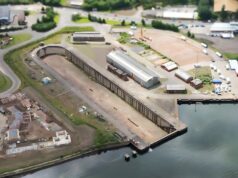
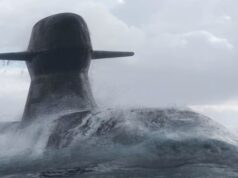


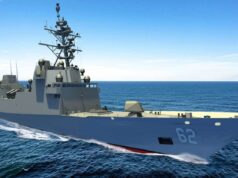
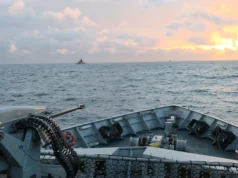

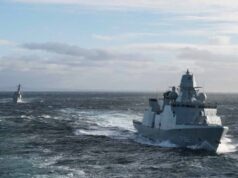
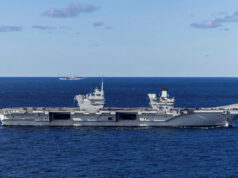

Ah, so the OPVs/Rivers are now being used for hotter environments due to hull shortages?
I’m not sure I’d want to be in a contested environment protected by only EW-lite and a 30mm?
Vital that politicians don’t start counting Rivers as warships.
It’s mainly going to be deterrent patrols to scare Russians away from pipes, there won’t be much chance of actual fighting so shouldn’t be an issue, definitely something the Rivers will be useful for
Well it says patrolling, so that’s the right mission for OPVs. Second line ships indeed
I can’t see that the OPV’S will be batch 2, more likely batch 1’s and they’ve only have a 20mm Oerlikon. Still if they can be placed between the frigates and or other allies heavier weaponed ships then at least they amount to more eyes and ears. Just looking for an positives and that’s about all I can see
Ditto the mk.1human eyeball trumps any of the new fangled electrical stuff.
Sadly that’s just not true Andy..we have not yet evolved to see into the electro magnetic spectrum, that takes sensors.
There end of the average sailors fingers are better than electro fangled gadgets although cheaper to build and operate some beers, the food, ready water and you’re good to go. But it takes a while to put them together(but still faster than a u.k dockyard worker).
Yes that’s a worrying precedent, this is clearly not a constabulary deployment….
and the Baltic with tensions as they are is no place for a RN constabulary vessel.
Isn’t it in different to flying unarmed rivet joint in the Black sea, they their to capture intel. Mess with them and you’ve probably just start WW3. Same for a Rviers it can monitor, dissuade, if you attack it you’ve start WW3. I’d be more worried about a B2 in the Gulf or Red Sea. Oddly the NATO response to Iran may be somewhat restrained than it would be against Russia in the Baltics.
The use of an asset should be done within a risk reward analysis.
A Rivet Joint have a lot of intelligence capability so a significant reward, i fail to see how a River gets to that level.
There’s no difference in the risk attacking either would be a huge escalation and prompt the same response. The risk only increases once conflict breaks out then the risk reward comes into play.
With the necessary fitt out it could
Hi expat.it’s a now well accepted fact ( via leaked documents ) that a UK rivet joint was attacked in the Black Sea and two missiles were fired at it and that only either a Failure of the Russian missiles or the river joints own systems saved it.
In the case of rivet joint it’s a high end intel gathering platform that does a job no other platform can undertake, it clearly ( from the fact a flanker attacked one and failed to kill it after launching two missiles ) has one of the best defensive suites money can buy and is escorted in its role in the Black Sea by 2 escort fighters…finally if the ballon ever did go up it can evacuate the danger area at very high speed and be 600 miles away in 1 hour..
As for the B2 it does not have any significant intelligence gathering capability ( literally all it has is is bog standard surface air search radar) and any ability would be far less than a normal warship ( an analogy would be sending an A400 to gather intelligence instead of a rivet joint)..it’s defensive aid suite is none existent and it can travel exactly 29miles an hour at very best speed if the ballon went up and the Baltic is 1000miles long…so if it’s playing in the east of the Baltic if would take it a good 24 hours to transit out of the danger area ( rivet joint would be gone in under 2 hours).
Also around an attack triggering WW3 there is a fine tradition of nations actuality attacking each other’s military and not triggering immediate wars….infact during the Cold War the USSR shot down no less than 15 US military aircraft in peace time…that does not include the veritable cull of each sides forces that were hidden in wars in Korea and Vietnam.. ( the USSR even had an acknowledged ace who shot down 6 US aircraft in the Vietnam war…when they were not directly at war)….The UK even went so far as to lie to the public about the attack on the Rivet joint..calling it a malfunction…when it was clearly an attack by a Russian pilot who thought he had permission to engage and destroy.
If the B2 was an intel gathering platform going in to do a job, with adequate risk management in place..then yes that’s a different story…this is sending a constabulary vessel into a high tension area to practice war fighting and act as a deterrent….what deterrent is a B2..a deterrent has to be credible and I would say this weakens the deterrent by showing a lack of capability to send the required warships..and why oh why would you send a constabulary vessel into an area to practice war fighting…it’s a very bad president.
It’s another point that proves that the Russian military capability is vastly overrated.
Don’t disagree, still there submarine service is still potent and in the end the big issue as always is the fact the Russians have a lot of nuclear weapons.
Thanks, Jonathan.
I know the USSR deployed fighter pilots against UN forces in Korea (1950-53) and against Israel (1970) – but I’ve never heard of Soviet pilots flying combat operations & destroying American aircraft during the Vietnam War. Do you have any more details? What was the name of the Soviet ace with six kills?
Hi Alan sorry I was a bit unclear, he was a missile ace…who was a SAM operator, he and is regiment “260” anti air regiment was transferred to North Vietnam in 1966…to provide training….but they trained by example…he was a fire control operator, who engaged 10 US aircraft and shot down 6, he was given the order of Lenin, his name was Vadim Petrovich Shcherbakov
if you look through the records of the Cold War, you will find huge numbers of examples where NATO and Soviet forces got down to the job of actuality killing each other…the Cold War is really a bit of a misnomer as although NATO and Russia never directly went to war…it was essentially a global conflict in which the two ideological powers clashed in asymmetric, proxy and unconventional warfare..when you think the U.S. casualties of the Cold War were around 100,000 it’s says something about the power of the nuclear deterrents in preventing a direct hot war ( both NATO and the USSR were willing to ignore provocation’s that would have lead to a direct war in a previous age).
As I said the deterance is what action you take next. Of course there examples of assets lost in peacetime. We have a policy where we wouldn’t fire unless fired upon so let’s say we stick a Type 45 there and it comes under attack, say torpedo its there’s really no difference in what happens next we either roll over and take the loss or retaliate.
The rivet joint was fired upon but it was the action of a pilot who misunderstood a command rather than Russia deliberately targeting it. The very reason you put any manned asset in a region is the deterance. Otherwise use unmarried but as we’ve seen the are of no deterance and have come under deliberately attack from states like Russia and Iran.
An let’s be honest anyone wanting to pick a proper fight is going to want to target as many assets as it can simultaneously whilst it has the upper hand and surprise. Targeting a B2 as an escalation wouldn’t be a smart strategy.
Plans to deal with the mad mullahs will already be drawn up already I think.just a matter of when. But I believe it will happen. The west is just waiting for the trigger. That set’s it off
B1s have undertaken non-constabulary deployments many times before. It’s not even a precedent for 2023, as HMS Mersey was there in the Spring. P2000s regularly play Red Team in the Baltic as some did at Baltops this summer. These ships aren’t being sent to a hot war.
And the archers are just fanny boats for the hooray Henry’s in university training units
Given the threats that this is hoping to deal with, I think OPVs would be fine- although they’ll need boarding teams. The threat is clandestine civilian vessels loitering near western pipelines and undersea cables, for monitoring and sabotage purposes. It’s a real threat, but not a hot one.
you’re right though, the Rivers, especially B1s aren’t warships, so just because they’re on this deployment doesn’t mean they should be treated as such in a higher active threat scenario.
There is room for up to 18-20 Royal marines for the boarding teams on the B1’s so should be fine
Thanks, that’s actually a little more space than I thought they had, so that’s good.
We’ve got a mighty Proteus to deal with the threat to undersea vitals
I’m pretty sure there’s a Carry-On worthy euphemism in there somewhere..!
And two fully serviceable ships are sat in Portsmouth doing nothing.echo and enterprise can do anything that a river can.
It tend to say that Enterprise and Echo might be more useful?
They have/had a better sonar fit?
They are also towed array capable and could also be used as ASW assets in the littoral with a few. Equipment fittings maybe ASW torpedo s which should be in a shed in Pompey dockyard after be removed from the T23 rotting up Fareham creek.
If they really are towed array capable then laying them up is even odder as they would be a force multiplier to a T23 / P8 / Merlin combo.
Mind you the Merlin could fly off any certified RFA with a hangar…..?
Can they reach 25 knots, accommodate 50 marines, lilypad a Wildcat, or crane a twenty five ton Warrior onto the deck? I agree they were/are very useful ships, but there’s no point exaggerating. They could do things a River can’t and vice versa.
We were chatting about Enterpruse and Echo – I knew they had a very good sonar fit.
I didn’t realise they were towed array capable.
Nor I.
I read a Navy Lookout (STRN) piece a few years ago profiling the Echos, and it was certainly mentioned. It just didn’t stick in my head.
“A large hydraulically-raised and lowered A-frame on the quarterdeck is used to deploy instruments towed behind the ship including the undulating oceanographic profiler (UOR) and sidescan sonars.”
Hmmme
But is this the same thing as the long tail, which is subject to aggressive wave action, or is this a depth adjustable towed drogue?
The long tail exerts quite enormous stresses on the hull which is why the ASW T23s were all strengthened as they started to crack.
We can’t get those T31s into service quickly enough.
what the Timescales for these now – in service not floating hulls?
Over to those contributors with greater expertise on build times than myself.
HMS Active is penciled in for service in 2027
The plan I think is IOC for HMS Venturer in 2025 or 2026
Babcock has said all 5 will.be completed by 2028, so they should all be commissioned and in service y 2030.
Far too long. We’re a joke
We can’t send them anywhere where there’s submarine threat though as neither they or their helicopter have any ASW detection equipment. They are escorts that need to be escorted by other ships to protect them from submarines.
That isn’t necessarily true.
It all depends on the UAV / drone ASW capabilities maturing.
They are also perfectly capable of having hull sonar or even a tail fitted.
The bigger issue is having the bodies to man a sonar office….
Fingers crossed they can have S2150 fitted. The RN have ordered 16 of them, at least one of which will never be used otherwise.
Unless accompanied by a T23 with a tail?
This is a strange deployment, it seems to be hinting at a current threat in the English Chanel and Baltic.
It has been well publicised Russian vessels and possibly submarines have been loitering near western infrastructure.
There is obviously far more data on the potential threat that is not made public.
So yes, I’d guess intell led.
Yes that’s what I was thinking. Thank god for GCHQ.
One of this nations greatest assets.
Menwith hill !
Yes, MH.
There are GCHQ, MoD and no doubt UK Mil embedded there. But most is NSA and USVF at that place.
Have a look at Hunters Stone to the south west of it.
Hi DM
I have a left field question for you. I was watching a repeat of Rick Stein’s Cornwall series, where he visited Falmouth harbour. In the background were RFA Argus, a Bay class lpd and a river class opv.
Does the Royal Navy have a base there- or was this a case of convenience for berthing?
The RFA vessels use Falmouth regularly mate. There is no “base” as such.
Not so strange.
Rishi pointed out this threat.
Russia obligingly blew up a few pipelines to make it real.
Coincidentally various fibre links have severed with Russian ships ‘around’
It might just be that Mad Vlad is making the best funding case for RN since WWII?
Everything else he has done has had the opposite effect…..
He is, I fear our politicians of both parties have other interests and priorities.
Like home pR and making promises that can’t be delivered. Take note Mr. Starmer.
Another reason we need to expand the navy , we just don’t have enough capital ships for the work now being tasked . Just a thought on this though , the French and Germans are conspicuous by their absence
Unfortunately they need to spend cash to improve pay and service conditions first, something that will never happen while Nos 10 and 11 are inhabited by bean counters.
👍
Neither are part of the JEF
France and Germany are so concerned about European security that they are not in JEF. Not enough job creation or subsidies in it for them.
Britain, Germany and Italy are the core nations in three different NATO framework groups (proposed and driven initially by Germany). UK’s JEF focuses on rapid reaction. Germany’s FNC on capability clusters.
As for the French, they have their own initiative, the European Intervention Initiative (EI2), which focuses on on intelligence sharing, scenario planning, support operations and doctrine. I believe Britain is a member of all three, but we concentrate deployments with the JEF.
Not sure what the Italian one does, but I think it’s aimed at North Africa.
You can almost hear the politicians, “just open another box of ships.” I hope that someone in the MOD is now pushing back on this and pointing out that resources were cut beyond the bone by the 2010 review, and it is not possible to sustain operations with too few sailors and not enough ships. For instance, how much tasking will they get with one P8?
And a Norwegian P8 and maybe another one?
Three, double crewed, should allow for operational tempo as P8’s bones are commercials designed to fly rather than be in a hangar.
I hope you are right, but I’m not sure that there are currently enough trained crews to double up. I am sure you can turn the aircraft around pdq but are there the people?
OT, the Canadians have just announced that they are buying into the P-8 programme, with a order for 14-16 aircraft with deliveries starting in 2026.
Plenty of scope to increase our numbers in the future if the MOD should so choose.
I agree.
I’ve many times posted a further buy of 3-6 P8 frames makes sense.
It is the quickest and cheapest way of boosting ASW.
Indeed we have a big EEZ and lots of navel commitments, that takes a decent amount of maritime patrol aircraft to support…trouble is I’m not convinced the RAF brass have much interest in capitalising the maritime patrol and navel strike beyond the bare bones to be honest.
Can’t say that I disagree ref RAF comment. To my mind both MPA and NS should really belong with the FAA. That however is not to be for a variety of reasons it seems, so, perhaps the RAF just need to be told periodically that that’s the way things are so get on with it.
Perhaps place a navy 1* somewhere within the MPA fraternity just because we can! Actually I’m sure that both work well together anyway, but would still like both capabilities held within the dark blue side.
I agree, I think maritime patrol should be FAA it makes sense. Navel strike is a bit more complicated I would imagine, but then again I think the RN really hold the ring for any navel aviation and that includes the F35s from the Elizabeth’s, but then I think the planned 3 squadrons is wrong headed and we should be aiming for 4 squadrons, three under the FAA for deployment on the carriers as navel strike and 1 for the RAF for expeditionary strike.
They are not part of the JEF structure, hence no involvement, although Germany probably should be part of the setup.
They are concerned about possible attacks on infrastructure now? What about the catastrophic environmental and economic damage when ‘somebody’ blew up the Nordstream pipelines? Nothing to see here, we don’t need an investigation as the USA blocked an investigation? And it’s just a coincidence that the USA benefited from it?
I think the Russian ships suspected of locating the undersea cables were auxiliary or pseudo-merchant surface vessels. In which case River 1 would be fine as a constabularly vessel.
The article says the deployment will be from the Channel to the Baltic, I would think the R1 would be at the Channel/home waters end of that.
If the Russians are using subs to do the dirty work, the Poseidon and embarked Merlins should pick them up soon enough.
Once the new Proteus MROS surveillance ship is ready, it will give a great additional capacity via its moonpool to check out undersea cables and pipelines, using uuvs and divers. A pity we are only planning 2 of them, we really need 2 minimum at sea, as a lot of the EU-North America cables go through or near our home waters , plus one in reserve, in case the Ruskies get ambitious.
People here just don’t like patrol vessels, most can’t grasp the idea of 2nd line ships. It’s a big deployment that’s going to spand a huge area and having the B1s there just to be extra eyes and ears (maybe even a drone) that can cover thousands of kilometers and mean our actual ships can do the major work. A lot of the disruptive missions supposedly launched by the Russians have been conducted from unarmed military ships or even some Russian merchant vessels, the Rivers are absolutely equipped to deal with that sort of thing anyway.
It’s our back yard and we aren’t at war this is a purely defensive deployment that’ll deter any undermining attacks we could suffer. With the news that HMS diamond will be heading East on short notice as well as the now large number of ships we have deployed in the Med and Gulf, alongside this new deployment also sends a message that we can still perform multiple missions in a wide range of climates simultaneously without effecting our other core commitments.
They also have one major advantage over every other surface warship we have. The little buggers are tough and reliable so they don’t breakdown all the time.
I’ve nothing against OPVs, I just wish at 2,000 tns, They had similar if more modern systems like Leanders’ used to have.
And here’s my point. They aren’t corvettes, they aren’t Leanders – they aren’t for fighting other ships or submarines. They are for anti-piracy, counter narcotics and telling fishermen to follow the rules. Extra weapons just makes the cost sky rocket means they’ll need more crew and mean the bean counters have an excuse to decommission actual fighting ships. It would be a deadly mistake to send even an unarmed one anywhere because they aren’t designed for it, the snatch Land Rover scandal comes to mind here.
Patrol ships patrol, every navy has them. They aren’t glamorous but they work.
Agreed. I’m a huge RB2 fan. I’d see them also used as SIGINT pickets, if they’re not already.
Mate agreed also what about a missile picket with a simple load of x 8 CAAM, expendable but useful on the flank of a carrier battle group? I’m also a big fan of the OPV concept, decent capabilities with abilities and capabilities to adapt and improve depending on the nature of the task and threat.
Morning mate. Yes, I assume you could arm them with that limited AD option, I’d prefer not to as I take on board the equation that doing so is less money on real fighting ships and also the extra systems GB once described with every extra toy armchair generals suggest.
I was visualising them almost as our version of the old AGIs, with their presence role loitering in various areas of the world, stick some ESM on them to add to the picture. Again, assuming that is even possible given the extra systems. In my ignorance, is adding a few aerials an easier task than advanced weapons?
Cost effective enhancements suited to their role without becoming a frigate seem the most obvious to me, a drone to expand their vision is another obvious one.
I’d like to see that extended to include a MCM mothership option. I believe there are containerised system available to that end. Plenty of space on the rear deck of a B2.
Morning mate. Yes, I recall Dern mentioned this available space, Get as much utility out of them without spending big and making them fighting ships which to my mind is all wrong.
Absolutely agree D!
The batch 1’s which will be the ones used in this case are 1700 tns are due to be out of service in the next 5-6 years are unfortunately unlikely to get any upgrades
Can’t you imagine what they’ll be replaced with?
Nope? Neither can I.
I am going to state the obvious, but first I have to say the RN are on the fucking ball! How the hell they keep producing the goods in regard to platforms and deployments is beyond me! Some decent forward planning and bloody good people I am presuming 🥷! Bloody ninjas! However, as others have echoed, are the OPVs now a fleet asset or are the hulls being manipulated for political reasons? I’m not RN, as I’m not weird enough 😂, certainly not in the loop in regard to the underwater bunch of pale very dangerous smart people, so any of you RN blokes, GB, deep etc, update us on the thought process of the northern deployments and the use of OPVs👍
Unfortunately they are doing it by using a lot of people who are now routinely undertaking back to back deployments, which is part of the reason why retention is a big issue. It’s ok though because Mr Shapps and the Bean counters are happy.
The hollowing out continues apace I am afraid and is being ably supported by those in Senior Uniformed positions who keep saying yes.
When in the past the RN would have deployed a whole squadron of frigates to a deployment. Now a maximum effort, due to other commitments and massive cuts over the last 20 years, is a task force that is not balanced and lacks real hitting firepower.
I’m assuming the threat is to sub sea infrastructure in the Baltic so the role the proposed type 32 was supposed to be optimised for.
The MOD and the frankly rubbish Sunak/ Hunt government need to get serious about the threats the UK and allies face and equip and man the armed forces to equal, face and defeat the threat-based assessment.
Words from my own mouth 👍 100%
“The Royal Navy will also send the aircraft carrier Queen Elizabeth to the Baltic Sea next year, according to announcements from Prime Minister Rishi Sunak-2, German newspaper “Frankfurter Allgemeine” says.